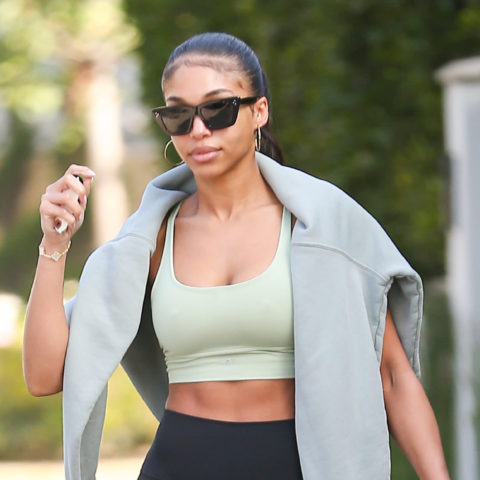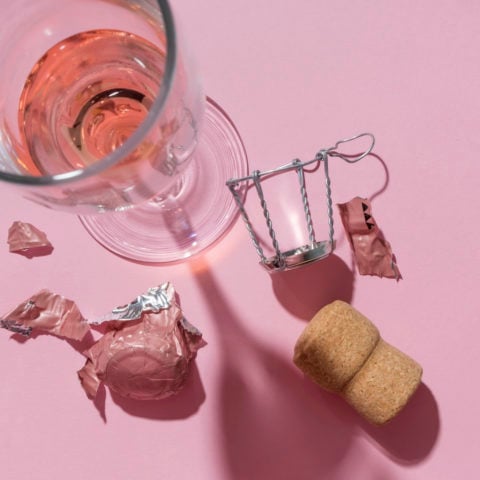We went inside the CoverGirl lipstick lab to see how makeup moves from conveyor belt to counter

When CoverGirl debuted its first lipstick line in 1964, it featured shades like “Pure Scarlet,” which seemed made for Mad Men types, while pinks were a hat tip to the Carnaby Street crowd.
Of course, those hues were jettisoned long ago. CoverGirl constantly assesses its lipstick portfolio to determine when it’s time for a reboot. One such overhaul was recently released: The Colorlicious line ($9 each) is made up of 36 hues categorized by four colour families (nudes, pinks, plums and reds), and boasts lipsticks with names like “Decadent Peach” (a kiss of pink-meets-peach), “Dulce de Leche” (a milky nude) and “Ravish Raspberry” (a punched-up berry). Makeup pro Pat McGrath, CoverGirl global creative design director, helped dream up the new collection and pinpoint holes in the existing one.
“We added some corals and oranges that we didn’t really have,” says Dr. Sarah Vickery, CoverGirl principal scientist. To develop the most user-friendly spectrum of shades, nude hues were given depth of colour, and reds were made over with diverse undertones to flatter various complexions. Take Succulent Cherry: The warm tomato-red is ideal for olive skin types. And “Seduce Scarlet,” an almost currant-coloured hue, is suited for even the fairest skin tones. But some old faves are sticking around, so there’s no need to hoard bestsellers like “Hot” (a universal red and one of McGrath’s backstage MVPs) and “Euphoria” (an aubergine, name-checked as Katy Perry’s go-to).
The brand’s headquarters (and birthplace) in Hunt Valley, Maryland, is a veritable beauty think tank with employees dressed in hairnets, white coats and goggles. The lipstick lab’s M.O. is to ace colour and continuity before bullets are blended, poured and moulded. To make it as a colour geek, R&D scientists have to pass muster on visual acuity: putting hues in order from dark to light while time’s ticking (only the sharpest eyes can do it under the gun), as well as deciphering colour chroma (“clean” colours, like lemon yellow, have really high chroma, and dirtier colours, like mustard yellow, have very low chroma) and figuring out subtleties in finishes (frost versus satin versus cream).
While formulators tackle the science of colour, McGrath dictates what’s new and now at the most directional shows and beyond (like this season’s to-die-for Dolce & Gabbana regal red). Her colour inspiration comes from many places, like prestige makeup or a swatch of fabric. “It could be an actual lipstick texture or a pot of cream,” says Vickery. “She’ll send it in, and say, ‘These are the shades that I want.’”
Offering the hottest colour trends is a big draw, but in order for a bullet to be a hit, the product needs to condition the lips. “Most women who wear lipstick three plus days a week, more than 50 per cent of them compensate with balms,” says Vickery. There’s also a misconception that the darker a colour is, the more drying it will be. To offset that, shea, avocado and aloe butters are mixed in.
While new lip hues are crafted largely based on internal expertise, next door in the mascara lab, researchers look to real women as their starting point in developing the next magic wand. “There’s a number of things that we’re looking at,” says Angela Fabula, a CoverGirl senior scientist who specializes in product research. “Her first impression of the product when she opens it up. Then we look at the application: How many strokes is it taking her? How easy is it for her to reach all of her lashes?” A two-way mirror lets researchers observe mascara guinea pigs as if they were applying it in front of their own vanity: Some apply multiple coats, while others wipe excess from the wand or zigzag for a lush and lifted look. It’s these idiosyncrasies that yield the most useful beauty intel. Post-application, a lens captures the lashes from all angles.
The latest innovation, Full Lash Bloom by LashBlast ($9), has a mousse-like texture with lighter-weight waxes. It’s paired with a moulded silicone brush that has a series of short and long bristles tapered to a dome tip for detail work. “It deposits product on the lashes in a more uniform manner, with less clumping, smearing and smudging than mascaras applied with a traditional wire brush,” she says.
Vickery admits that it took a while for women to adopt this new generation of wands. “When we first went to the silicone-bristle brush with the LashExact launch in 2006, we were very careful to make sure the design still looked like what everyone would expect from a traditional twisted wire mascara brush.” But now that different types of wands are de rigueur, expect even cooler brush innovations in the future.







